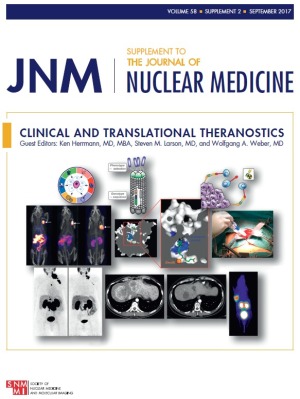by
Lauren Dubinsky, Senior Reporter | September 15, 2017

New targets open new doors
Theranostics is the future of precision medicine, according to The Journal of Nuclear Medicine’s September 2017 supplemental issue.
“I do believe that the industry is ready for [theranostics], as AAA has recently shown by picking up 177Lu-DOTATATE, conducting a prospective randomized phase III trial and now waiting for FDA approval,” Dr. Ken Herrmann, co-editor of the supplement and chair of nuclear medicine at the University of Duisburg-Essen, told HCB News.
Articles published in the issue explore the latest research involving multireceptor targeting and new strategies for prostate-specific membrane antigen imaging/therapy, and targeting the somatostatin receptor.



Ad Statistics
Times Displayed: 364994
Times Visited: 6961 Quality remanufactured Certified Centrifuges at Great prices! Fully warranted and backed by a company you can trust! Call or click for a free quote today! www.Centrifugestore.com 800-457-7576
Treating cancer with theranostics is also discussed, including intra-arterial yttrium-90 therapy for liver metastases. Other areas of interest are targeting the CXCR4-receptor in hemato-oncological tumors, the neurotensin 1 receptor in pancreatic cancer, Ewing sarcoma and gastrointestinal tumors, as well as alpha-MSH1 in melanoma.
Herrmann believes that in order for theranostics to enter clinical practice, two things need to take place. The first is prospective randomized clinical trials that lead to FDA approval and CMS coverage, and the second is setting up dedicated theranostics treatment centers throughout the U.S.
Based on experience from Europe, the U.S. could expect a dedicated theranostic center for at least every 1.5 to 2 million inhabitants, which would translate to around 160 and 200 centers.
“There is a need to set up dedicated theranostic therapy centers, and first of all it has to be shown that maintaining these theranostic treatment centers is a viable business,” he added. “Here industry, insurances, patient interest groups and academia need to join forces.”
Aside from neuroendocrine tumors, theranostics also holds promise for treating prostate cancer. Research that targets PSMA linked to beta- or alpha-emitters has demonstrated impressive results in the first human cases as well as in small prospective trials.
“After having shown clinical effectiveness in prospective randomized trials this new theranostic will heavily impact patient care and quality of life in prostate cancer patients,” said Herrmann.
He added that there are even more promising targets and theranostic concepts coming down the pike, as more and more pharmaceutical companies such as Bayer and IPSEN are moving more seriously into the space.

